Introduction & Tour of the Alcor-B Foundation’s Mobile, Arizona Patient Care Facility & Existential Colony
Address given to Alcor-B Foundation Cryopreservation Members and Staff
Alcor-B Cryopreservation Research Foundation (ABCRF)
15 September, 2012 By Gorton Carpenter, M.D., Ph.D., President of the Alcor-B Foundation
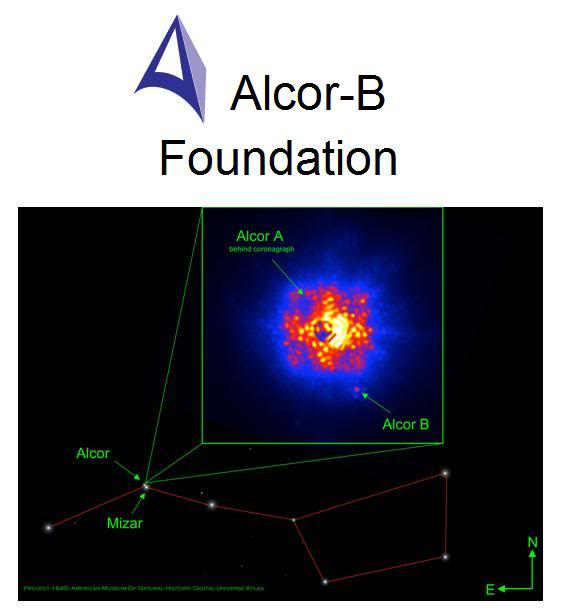 Figure 1: The Alcors are the second, smaller and dimmer companion stars to Mizar, the bright stars that comprise the crook in the handle of the Big Dipper constellation. In the Arab world of the 5th Century CE, Mizar’s much less bright (and more difficult to see) companion stars, Alcor-A and Alcor-B were used as tests for good vision. Only someone with the clearest and most acute visions could see the Alcor’s. Alcor-B was discovered early in 2011 using Project 1640m, which makes use of the Hale Telescope’s adaptive optics system. Project 1640 gives the Hale a view almost equal to what is possible in space. The instrument also has the ability to block out the light of a star, allowing faint objects located next to a star to be seen. The Hale, armed with Project 1640, was pointed at Alcor earlier this year and found that it isn’t a single star. Alcor has a small stellar companion that hadn’t been seen before: Alcor-B, a small, dim red dwarf star about one fourth the mass of our Sun. To see Alcor-B you must have the superior vision that only mastery of the most sophisticated technology allows. Alcor-B is thus a test for the clearest and most acute vision – vision capable of seeing things as they really are – not just as they appear to be.
Figure 1: The Alcors are the second, smaller and dimmer companion stars to Mizar, the bright stars that comprise the crook in the handle of the Big Dipper constellation. In the Arab world of the 5th Century CE, Mizar’s much less bright (and more difficult to see) companion stars, Alcor-A and Alcor-B were used as tests for good vision. Only someone with the clearest and most acute visions could see the Alcor’s. Alcor-B was discovered early in 2011 using Project 1640m, which makes use of the Hale Telescope’s adaptive optics system. Project 1640 gives the Hale a view almost equal to what is possible in space. The instrument also has the ability to block out the light of a star, allowing faint objects located next to a star to be seen. The Hale, armed with Project 1640, was pointed at Alcor earlier this year and found that it isn’t a single star. Alcor has a small stellar companion that hadn’t been seen before: Alcor-B, a small, dim red dwarf star about one fourth the mass of our Sun. To see Alcor-B you must have the superior vision that only mastery of the most sophisticated technology allows. Alcor-B is thus a test for the clearest and most acute vision – vision capable of seeing things as they really are – not just as they appear to be.
 Figure 2: Alcor-B President, Gorton Carpenter, M.D., Ph.D.
Figure 2: Alcor-B President, Gorton Carpenter, M.D., Ph.D.
We have covered a fair amount of ground here today, in pretty much the order we needed to, and now it is time to intellectually explore what lies below the surface here, as we are about to do physically.
The existential risks that cryonics and Alcor-B confront are well known to most of you. As you can see in this slide (Figure3), those risks have been color coded based on the risk assessment done by the Timeline to Recovery Project (TRP) analysts. Those in red were deemed the highest risk, with those in yellow coming in a close second.
 Figure 3: The primary existential risks that cryonics patients and Alcor-B staff face in the coming years. Arguably, two of those risks, climate change and economic upheaval are beginning to unfold at present.
Figure 3: The primary existential risks that cryonics patients and Alcor-B staff face in the coming years. Arguably, two of those risks, climate change and economic upheaval are beginning to unfold at present.
Had we remained in the greater Los Angeles area we would already be suffering from the effects of a devastating earthquake. We can congratulate ourselves for having dodged one arrow. However, there are some arrows of fortune it is hard to escape. We are already in the throes of a serious economic upheaval, indeed of a global depression, and we are also suffering from the early effects of what will very likely be a climactic catastrophe of similar magnitude to the Little Ice Age, or the MezoAmerican Drought that collapsed the civilization of the Maya. We have the technology to cool the earth, but it remains to be seen whether we have the will, as a species, or the political ability equal to the task. Unlike as was the case with the Big One, from these two existential threats we cannot run, but rather, only hope to shelter ourselves until they pass or can be overcome buy our own efforts.
 Figure 4: The map above shows the probable extent of the spread of a highly infectious communicable disease in the US. By day 87 virtually all populated areas of any size are infected. The inset curve shows the rate of transmission from the start of the infection until saturation is reached at day ~ 87. There is a window of ~ 30-50 days where reverse quarantine measures may be effective, providing that the infection has not already entered our colony from contact with Phoenix, or other large metropolises.
Figure 4: The map above shows the probable extent of the spread of a highly infectious communicable disease in the US. By day 87 virtually all populated areas of any size are infected. The inset curve shows the rate of transmission from the start of the infection until saturation is reached at day ~ 87. There is a window of ~ 30-50 days where reverse quarantine measures may be effective, providing that the infection has not already entered our colony from contact with Phoenix, or other large metropolises.
The TRP projections show a high probability (0.07) that a consequence of the interaction of the current climactic and economic chaos will be the emergence of one or more highly infectious, and reasonably lethal, pandemic diseases. Already, the untreatable strain of N. gonorrhea, which emerged late in2010, has created major public health problems and untold misery in the Developed World. In the Third World, it has proven an unsustainable strain on the healthcare system, and has resulted in a growing population of often malnourished, and now chronically morbid individuals, who are in a weakened state and easy pretty to other infectious agents.
The emergence of carabapenem resistance in gonorrhea, the last line of defense in the treatment of this venereal disease, has broader implications, since global surveillance is increasingly detecting the plasmid that confers antibiotic resistance on this organism in other microorganisms. Given the cohabitation of N. gonorrhea with S. aureus, and the various members of the Streptococcus family that naturally colonize our skin, it is likely only a matter of time before fully antibiotic resistant strains of these organisms emerge, and we are plunged back into the dark and terrifying time before effective antimicrobial therapy existed.
This slide (Figure 4) shows the time course and expected pattern of pandemic disease spread in the United States. We are, as you can see, located fortunately with respect to having some days notice that trouble is afoot. We have equipped the Alcor-B Facility with Nuclear, Chemical and Biological (NBC) air handling facilities, and we have added to those the ultraviolet virucidal treatment of all intake air. We have also offered subsidies and assistance to all member households on the campus of the Facility to allow them to prepare for such a contingency. And of course, a comprehensive plan of action to implement the reverse quarantine of the Facility, is also now operational. Part of the assistance offered resident members here is participation in the food reserves program which provides for sufficient long-term-storable foodstuffs to provide a sufficient calorie, protein, and micronutrient intake for 3-years, for each resident of our community.
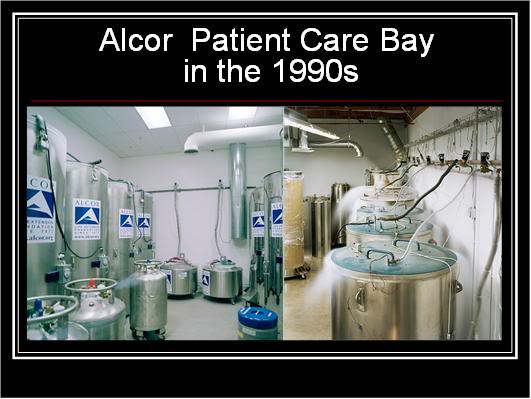 Figure 5: Two views of the Alcor-B Patient Care Bay during the interval from the mid-1990s (left) to the early 2000s (right).
Figure 5: Two views of the Alcor-B Patient Care Bay during the interval from the mid-1990s (left) to the early 2000s (right).
The Alcor-B patient care facilities in the 1990s (Figure 5) were woefully vulnerable to external assault – a risk we didn’t take seriously, in large measure because we thought we had no reason to. While cryonics has never been a treasured part of this culture (laughter), and while it has long been held in contempt, the contempt was never of a malicious, let alone a violent nature. We were considered non-threatening, and remained so, until the cryopreservation of the iconic American baseball hitter Ted Williams, in 2002. At that point, an irreversible threshold was crossed.
Cryonics not only touched mainstream American culture in an ineffable way, it forced it to confront the fundamental dichotomy between its values, and ours. Not only could the culture not comprehend that one their heroes wanted to pursue practical immortality, they could not even begin to comprehend that we were not going to bend, either to their will, or their flawed system of values, and surrender an Alcor-B patient to the mob for destruction. This resulted in vandalism, gunfire into the Alcor-B facility, and the emergence of a small but damaging corps of people committed to the destruction of not only Alcor-B, but of cryonics as a whole. And not just here in the US, but in the whole of the West, as the actions of individuals in the UK and Western Europe demonstrated.
 Figure 6: The Alcor-B Patient Care Bay in 2009, shortly before the move to the Mobile, AZ Facility. (Photo by Murray Ballard.)
Figure 6: The Alcor-B Patient Care Bay in 2009, shortly before the move to the Mobile, AZ Facility. (Photo by Murray Ballard.)
As late as a year ago, this is how our PCB looked (Figure 6). While precautions had been taken to reinforce the perimeter walls, and to protect the ceiling/roof from assault by the use of blast-resistant polymer matting, there was no control of the facility perimeter and the degree of protection against an explosive device as simple an easy to fabricate as a large pipe bomb, was minimal. Thankfully, the titling caption on this slide is now obsolete. We hope that the Cryonics Institute will also act to harden their facilities to protect their patients from assault by the deranged as well as by the evil and determined.
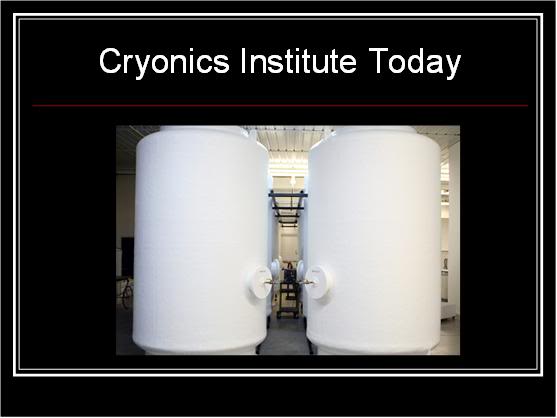 Figure 7: A contemporary view of the patient care area of the Cryonics Institute’s facility in Clinton Township, MI
Figure 7: A contemporary view of the patient care area of the Cryonics Institute’s facility in Clinton Township, MI
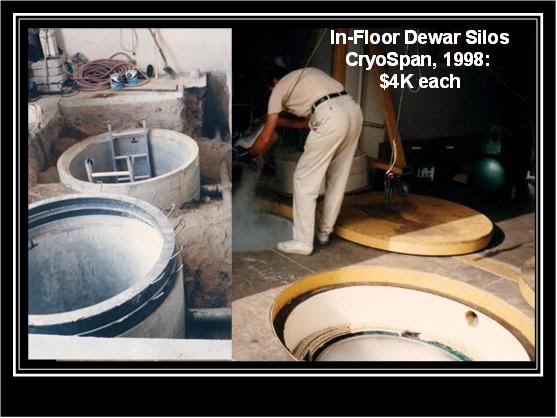 Figure 8: At left above, two of the below ground silos that housed Bigfoot dewars at the facilities of CryoSpan, Inc., in Rancho Cucamonga. CryoSpan is no longer in operation.
Figure 8: At left above, two of the below ground silos that housed Bigfoot dewars at the facilities of CryoSpan, Inc., in Rancho Cucamonga. CryoSpan is no longer in operation.
We considered many options before deciding upon the Mobile, Facility. One option was to protect the patients in the way that CryoSpan, Inc., did in the late 1990s (Figure 8). Mark Connaughton and Paul Wakfer did a brilliant job of implementing a suggestion from Mike Darwin, that the patient dewars be sunk in the ground in steel reinforced concrete silos. This approach provided an excellent level of protection against many of the existential risks that we’ve just covered (Figure 3). But it falls short of the comprehensive protection we wanted, and of course, it could not address protection of the staff ,or the assurance of the infrastructure required to maintain the patients in cryogenic refrigeration.
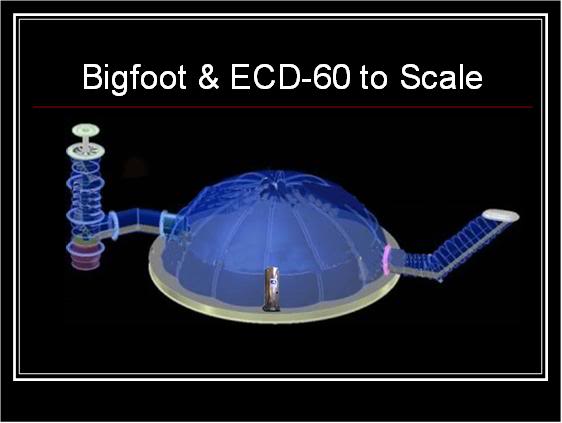 Figure 9: The relative scales of a standard, immersion LN2 storage Bigfoot dewar, and the ECD-60 dome that now houses Alcor-B’s patients.
Figure 9: The relative scales of a standard, immersion LN2 storage Bigfoot dewar, and the ECD-60 dome that now houses Alcor-B’s patients.
After a great deal of searching and evaluation, we decided upon a facility close enough to a major city to make LN2, major emergency medical care, and the other amenities of civilization within easy reach, and yet be far enough away to be outside of the “ring of destruction” cities create when they implode from civil unrest, or are the target of thermonuclear attack. That’s how the Mobile site was selected. The decision was then made to use a range of Green Eye Technology modular shelter systems to fabricate the most hardened and subterranean parts of the Facility. To house the patient storage part of our operation, we selected their ECD-60 (Earthcom Dome, 60 ft diameter x 22 ft high) The ECD-60 serves as a central atrium to connect the multiple CAT 12 and CAT 25 shelter modules (Figure 10). In addition to patient storage, the atrium is used to store additional food, houses the communications and defense center, serves as a meeting and entertainment area, exercise area, and so forth. The ECD-60 has its own NBC air supply system with a peak capability of processing 1200 cfm of outside air. As I said previously, we have outfitted that air handling system with a UV sanitizing system. The relative size of the ECD-60 to a Bigfoot patient storage dewar is shown in this slide (Figure 9).
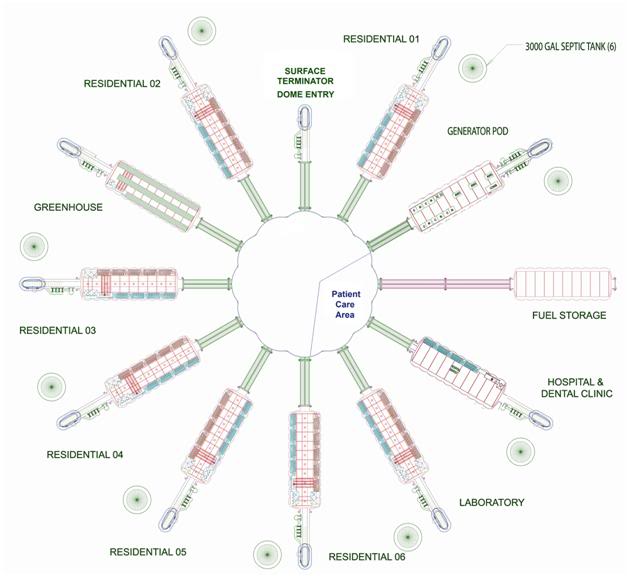 Figure 10: The subterranean complex that comprises the maximally hardened parts of the Alcor-B Mobile, AZ Facility. The ECD-60 Dome serves as the hub from which 11 modules radiate like spokes. There are 6 residential modules, a hospital/dental module, a laboratory module which houses an emergency cryopreservation capability, a diesel fuel storage tank, a diesel powered electricity generating plant and a greenhouse which is used for storage of supplies until the facility becomes active in an emergency. The Patient Care Area is the in part of the ECD-60 that adjoins the clinical and technical spokes of the facility. The remainder of the ECD-60 houses the communications and defense center and is used for storage, communal dining and meeting spaces.
Figure 10: The subterranean complex that comprises the maximally hardened parts of the Alcor-B Mobile, AZ Facility. The ECD-60 Dome serves as the hub from which 11 modules radiate like spokes. There are 6 residential modules, a hospital/dental module, a laboratory module which houses an emergency cryopreservation capability, a diesel fuel storage tank, a diesel powered electricity generating plant and a greenhouse which is used for storage of supplies until the facility becomes active in an emergency. The Patient Care Area is the in part of the ECD-60 that adjoins the clinical and technical spokes of the facility. The remainder of the ECD-60 houses the communications and defense center and is used for storage, communal dining and meeting spaces.
This slide shows the complete layout of the subterranean area of the Facility. The costing figures I will be discussing directly include only the ECD-60 Dome, one Cat-12 Residential Module and the Power Generating and Fuel Storage Modules. The other modules of the facility you see laid out here were paid for either by consortiums of Alcor-B members for their own use (via a long term lease-back agreement), or through directed donations. The Catalano Family deserves our tremendous gratitude for providing the funds for the Hospital/Dental and Laboratory modules. These facilities will not only provide medical care for staff and residents, they also allow for any member who needs to be cryopreserved to be perfused and vitrified, even under emergency “hunkered down” conditions.
This configuration, when the greenhouse is operational, will allow for the shelter of ~ 300 patients (as neuros), as well as 300 residents and staff for a period of 3 years, without recourse to outside resources. This includes all resources necessary for survival including, food, water, medicines and NBC processed breathing air. The Patient Care Area, as currently configured, can hold 200 whole body patients and 250 neuropatients. However, in the event of an existential catastrophe of such a magnitude that neither grid power nor liquid nitrogen is available, the whole body patients would, of necessity, be converted to neuro. This could conceivably change if extra generating and liquid nitrogen production capacity were to become available.
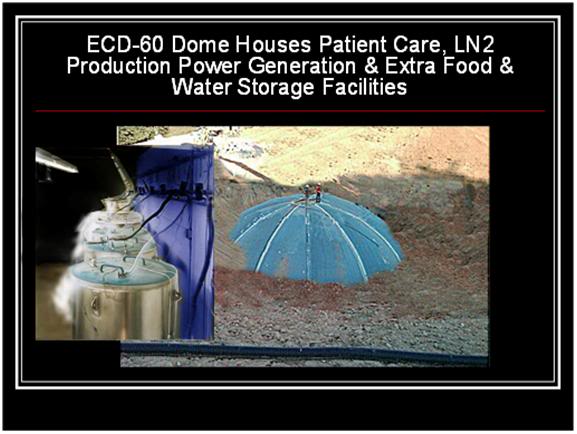 Figure 11: At right above, two men from the construction crew stand atop the ECD-60 shortly before the earth backfill was completed. At left above is the Patient Care Area of the facility as it appears today.
Figure 11: At right above, two men from the construction crew stand atop the ECD-60 shortly before the earth backfill was completed. At left above is the Patient Care Area of the facility as it appears today.
This image (Figure 11) shows the backfill operation underway (at right). The two workers standing atop the dome give some perspective to the scale of the structure and the size of the undertaking. None of these images or plans shows the vehicle access portal (VAP) or its location, for security reasons. The VAP is the way that patient storage equipment and the patients themselves are moved in and out of the facility. Because this structure had to have doors that were blast-resistant to 2o psi of overpressure, a unique design was required and a lot of very clever engineering went into making the VAP convenient to use, as well as hardened against assault.
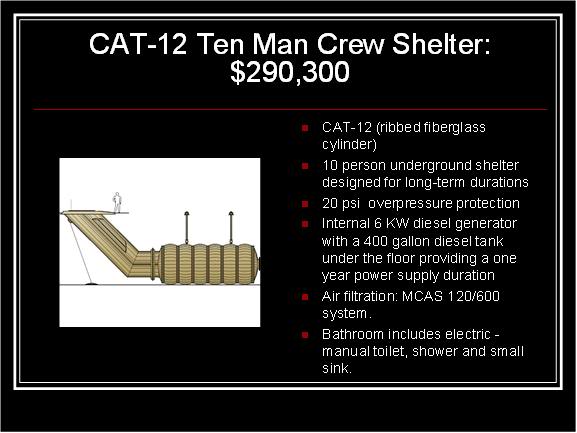
Figure 12: The CAT-12 houses the Alcor staff and also houses a self-contained air handing and power generating facility. The CAT-12 contains enough food and water for a 90-day stay.
The CAT-12, CAT-15 Greenhouse, Power Generating Module, and the Hospital and Laboratory Modules, were all back-filled, covered and compacted before the ECD-60 was. The ECD-60 was the last structure to be buried, because it serves as the central connecting hub – the other modules had to be in place and fully wired and plumbed before ECD-60 could be buried. And since we planned to place a heavy structure atop the Residential Modules 01 and 02 (the Friendly Fortress), it was necessary to achieve a high degree of soil compaction. This took a lot of extra time and a lot of water!

Figure 13: Installation of the CAT-12 Residential Module in the Mobile, AZ facility. The inset photo shows the interior of the CAT-12 as it appears today
The CAT-12 is the smallest housing module in the facility. It was originally selected to house the Alcor-B staff, because it was both adequate, and within our very limited budget at the time. The CAT-12 can house 10 people in reasonable comfort and it has its own independent power generating capability, galley, 60 day food supply, and air filtration system (Figures 12 & 13). Our original plan for this facility included only the CAT-12 Residential Module. When additional funds became available for an expanded shelter capability to house Alcor-B residents, we decided to leave the CAT-12 configured as originally planned, because this would allow for staff to be emplaced independent of residents (Figure 14). This might be required in situations where the risk was deemed high enough to “button up” the facility and protect the critical personnel needed to care for patients, but where the situation was not deemed urgent enough to shelter the full contingent of the community’s residents.
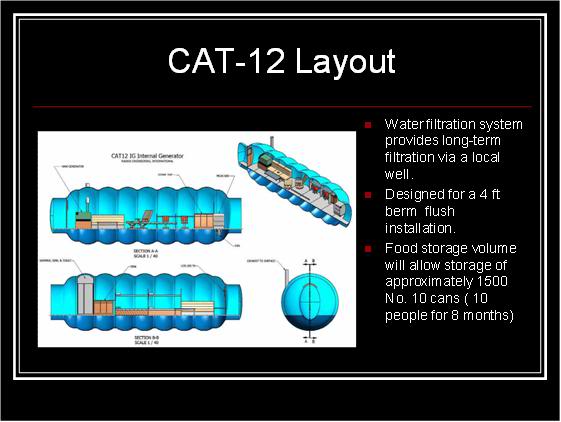 Figure 14: Specifications and interior layout of the CAT-12 Residential Module.
Figure 14: Specifications and interior layout of the CAT-12 Residential Module.
Of course, what we would really like, would be a facility that could autonomously care for Alcor-B’s patients indefinitely. That ideal facility would be nuclear fueled, and use a super-efficient thermopile (thermocouple) generator to make electricity from heat; and then use the electricity to cool the interior of the dewars to -150○C, using the Peltier effect (again, thermocouples as used in the power generating thermopile (but run in “reverse” as thermoelectric cooling elements).
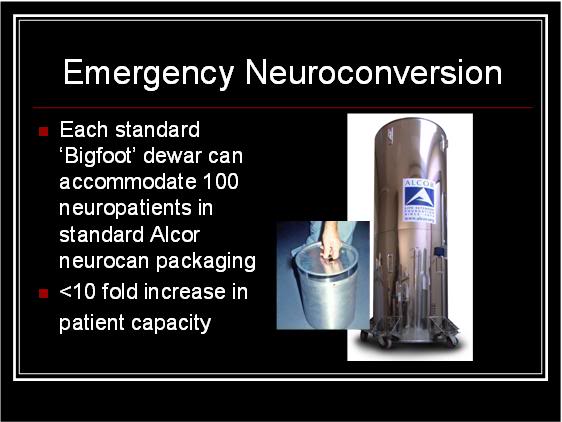 Figure 15: In the event of a prolonged existential crisis the current emergency survival plan calls for conversion of all whole body patients to neuro so that everyone can be cared for within 1 or 2 ITS Bigfoot units.
Figure 15: In the event of a prolonged existential crisis the current emergency survival plan calls for conversion of all whole body patients to neuro so that everyone can be cared for within 1 or 2 ITS Bigfoot units.
This would comprise a power generating and refrigerating system with no moving parts and with a life span that would equal that of the working life of the nuclear fuel. Alas, the Nuclear Regulatory Commission is not going to give us either plutonium or Strontium-90, and in any event, thermoelectric cooling technology is not quite good enough yet!
The next best thing was to come up with a system which would run as long as currently available and affordable technology would allow, and that was within our budget of ~ $2.5 million 2010 US dollars.
Due to budget constraints, it became immediately apparent that it would not be possible to operate more than two Bigfoot units continuously in an “off-grid” fashion. The solution would be to configure our long-duration emergency capability around the conversion of the whole body patients to neuro. This would allow us to easily store 200+ neuropatients using our existing packaging and packing configurations, as well our existing cryogenic storage hardware.
The person who should be credited with first coming up with this idea of using a Bigfoot dewar to store the whole patient population, and to refrigerate it independent of the grid, was Dr. Greg Fahy. Back in the late 1980s he proposed using a liquid helium refrigerated “cold finger,” of the type used to pinch hit for LN2 in electron microscopes and other kinds of laboratory equipment that need ultra-low temperatures but don’t want to be bothered with the logistic headaches associated with LN2. His calculations at that time showed that this was indeed doable with off the shelf equipment then commercially available. So, when we began to explore this option, cold fingers were the first thing we looked at. However, we soon discovered that technological advances in small capacity LN2 production plants made the cold finger option no longer attractive.
 Figure 16: The CryoMech LNP-40 liquid nitrogen (LN2) plant.
Figure 16: The CryoMech LNP-40 liquid nitrogen (LN2) plant.
Due to advances in molecular sieving technology, as well as in the design of the Joule-Thompson helium refrigerators used to cool nitrogen (or air) to the point of liquefication, it was now possible to produce LN2 economically, and in quantity, without the need for a separation tower (Figure 16). In the past, LN2 was made by first liquefying air, and then separating out the various chemical components that make it up; oxygen, water, carbon dioxide, the noble gases, and so on… This was an inefficient process and one that required a lot of maintenance of the liquefaction equipment. It also greatly shortened the time to failure of the LN2 plant.
It is now possible to separate nitrogen from the rest of the gaseous components of air using spiral wound membranes that allow nitrogen to pass across them, but which reject the unwanted gases – very much like reverse osmosis membranes. This technology eliminates the needs for a separation tower and it greatly increases the energy efficiency of the LN2 production. The absence of water (ice) also prolongs the life of the moving parts in the system, increasing the time to failure (or preventive maintenance) by about two orders of magnitude over the small capacity plants that were available in the 1980s, when Alcor-B first examined this technology.
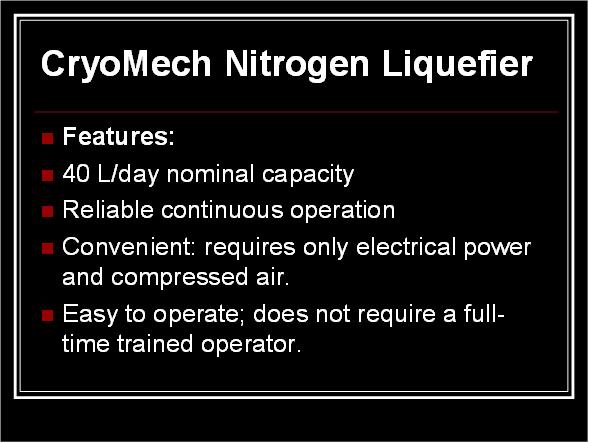 Figure 17: Specifications of the CryoMech LN2 plant.
Figure 17: Specifications of the CryoMech LN2 plant.
The platform we selected for use here in the Mobile Facility was the Cryo-Mech, Inc., LNP-40. This small LN2 production plant can generate up to 40 liters per day of LN2 at a rate of ~1.6 liters per hour. This would be enough to keep one of the Intermediate Temperature Storage (ITS) Bigfoot dewars operational and two of the conventional immersion LN2 storage units in operation.
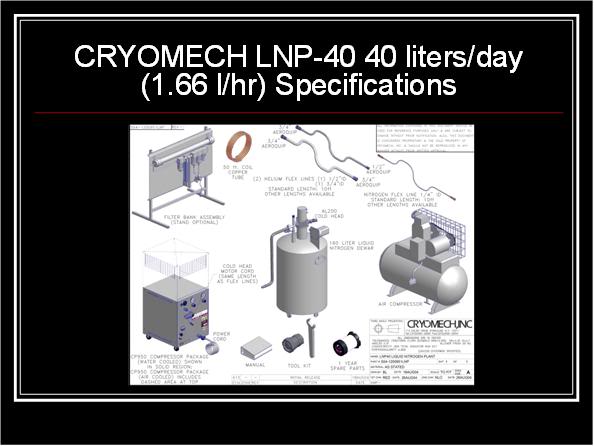 Figure 18: The elements which comprise the LNP-40 LN2 plant: molecular sieve membranes (upper left), air compressor which supplies air to nitrogen sieving membranes (middle right), LN2 collection and discharge dewar (center) and the Joule-Thompson nitrogen liquefier (lower left).
Figure 18: The elements which comprise the LNP-40 LN2 plant: molecular sieve membranes (upper left), air compressor which supplies air to nitrogen sieving membranes (middle right), LN2 collection and discharge dewar (center) and the Joule-Thompson nitrogen liquefier (lower left).
Necessarily, two of these plants must be purchased at the same time to provide redundancy, both during routine servicing and in the event one of the plants experiences an irreparable failure during the off grid interval. Thus, our initial capital outlay for the complete refrigerating system, including two LNP-40 LN2 liquefiers was ~ $144,000. We purchased enough service kits to allow for continuous operation of both systems for 3 years.
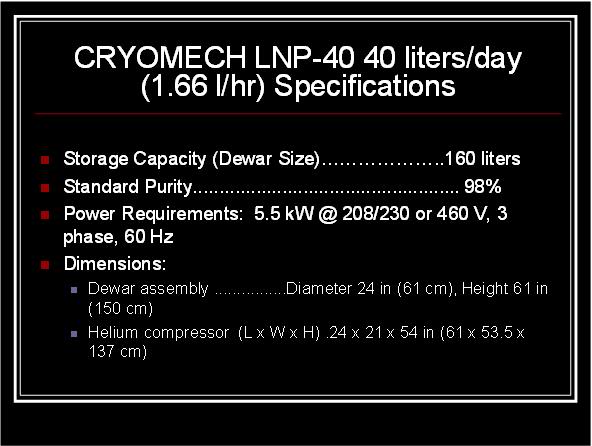 Figure 19: Additional specifications of the CryoMech LNP-40.
Figure 19: Additional specifications of the CryoMech LNP-40.
The LNP-40 discharges LN2 into a specially designed 160 liter storage vessel from which it is subsequently dispensed to the Bigfoot units, as needed. In the near future we plan to have the LN2 from the LNP-40 collected in a larger, super-high efficiency storage vessel. This will maximize our energy efficiency, minimize the wear and tear on the liquefier, and allow us to better use the LN2 produced as “energy currency” for refrigeration where and when needed elsewhere in the Facility. As you can see (Figure 19) LN2 production does not come cheap in terms of the energy required. While industrial-scale plants are much more efficient, the LNP-40 is still impressively parsimonious when it comes it come to power consumption, since it uses only 5.5 kW.
And that leads to the next issue we had to address, namely where are we going to get that kind of power from off the grid, and reliably, for up to 3 years at a time? Diesel fuel is an option, but the quantities required are not only costly, they presented major regulatory problems with both Maricopa County, and the City of Goodyear. We took a long hard look at solar, and decided it was not only workable, but that it was the superior option. Besides, it seemed only fair that, given the merciless baking we endure from the Arizona sun, year in and year out, that we be able to convert some of that blistering energy into refrigeration for our patients!
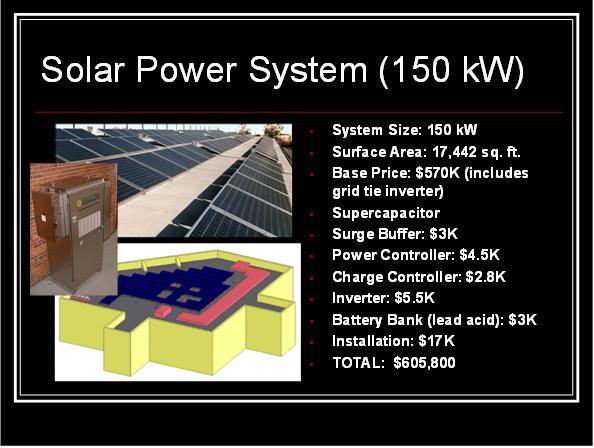 Figure 20: The key elements (and their cost) of Mobile Facility’s solar power system.
Figure 20: The key elements (and their cost) of Mobile Facility’s solar power system.
We were pleasantly surprised to find that there were systems available pretty much as turnkey items in the capacity range we needed, principally 150 kW (Figure 20). We have two discrete solar power generating arrays: one atop the Friendly Fortress (FF, surface terminator) to the facility, and another, much larger one, located south of the FF. We have plans to enclose this second array in a more secure fashion, since it is essential to provide sufficient power to operating the LNP-40. The array atop the FF provides enough power for the staff and residents. We also have a large (buried) reserve of stabilized diesel fuel which is sufficient to operate the entire facility continuously for 3 months. Used in conjunction with solar power, this reserve of diesel will allow for uninterrupted operation for approximately 3 years. This assumes the normal number of sunny and cloudy days here in the Northeastern Sonoran Desert. All bets are off there is a nuclear winter, or other diminution of the anticipated solar radiation, of any duration.
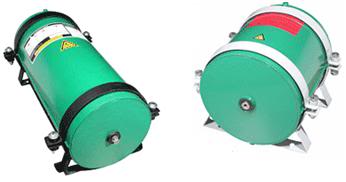 Figure 21: Supercapacitors of the kind used to store solar-generated electricity in the Alcor-B Facility to meet the “surge demand” of starting motors.
Figure 21: Supercapacitors of the kind used to store solar-generated electricity in the Alcor-B Facility to meet the “surge demand” of starting motors.
At the present, we have 17,442 square feet of solar electric panels. While we are relying on lead-acid batteries to store energy, we are also using Supercapacitors. Unlike batteries, which store energy in an electrolytic chemical reaction, supercapacitors store energy in the field state across the area of an electrode, which is made of a sophisticated carbon aerogel. Supercaps offer a combination of high power storage density, high voltage levels, and high charging speeds. This means much more compact and powerful storage that can be quickly recharged. For this marvelous innovation we thank Eugen Leitl, who first suggested their use, and who was of great help in generating the specifications and working the Canadian manufacturer, to ensure that the finished product met our needs. Supercaps have vastly longer life spans than lead-acid (or other kinds of) batteries. But their greatest advantage is in their unique ability to meet the large surge requirements of the motors in use throughout the facility, and especially the air compressor and the Joule-Thompson compressor motors necessary to operate the LNP-40. Supercaps quickly discharge the large amounts of energy required for the “start-up surge” of these motors
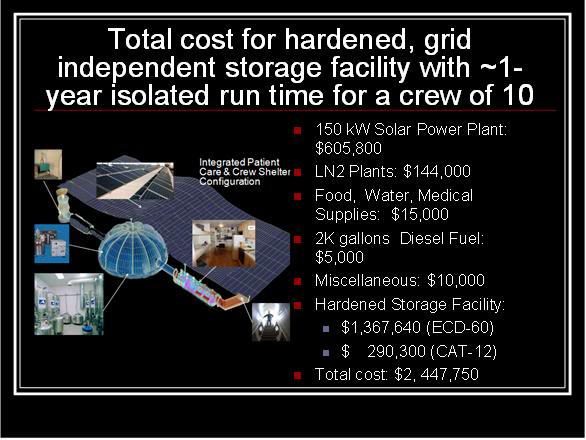 Figure 22: The cost breakdown and key elements of the patient care essential portions of the Alcor-B Mobile, AZ Facility (2010 US dollars).
Figure 22: The cost breakdown and key elements of the patient care essential portions of the Alcor-B Mobile, AZ Facility (2010 US dollars).
In concluding, I’d like to briefly review the key elements of this beautiful new facility, before we start our tour of it. The entire physical plant, including LN2 production, can be operated from the 150 kW solar arrays and is capable of running for up to 3 years without grid power, or supplies from the outside. The total cost to Alcor-B for the patient and staff essential parts of this facility was $2, 247,750 in 2010 dollars. The cost for the rest of the facility, exclusive of the above ground residences, was $4, 356, 925 in 2010 dollars. I believe I can confidently state that this is the most secure, the most technologically advanced and the most beautiful cryonics facility on the plane! It fulfills the dream of our founders, Fred and Linda Chamberlain, and of Mike Darwin and Jerry Leaf – all of whom realized, and worked for the day when Alcor-B would be as protected from existential and other risks, as current technology allows. Today, their dream is our reality.
The End of The Beginning


I am very impressed. Keep it up!